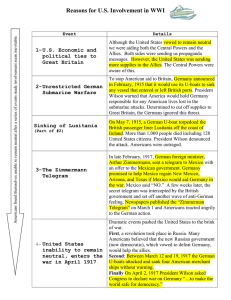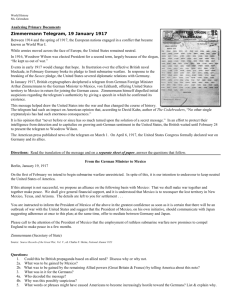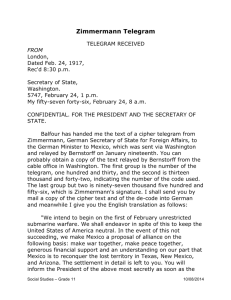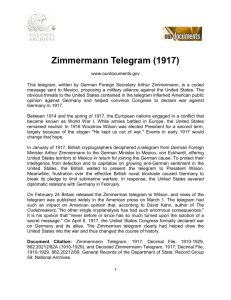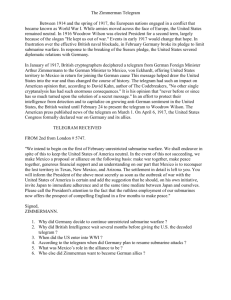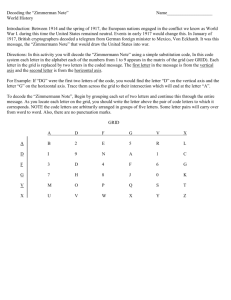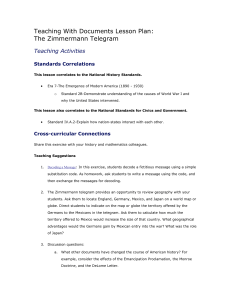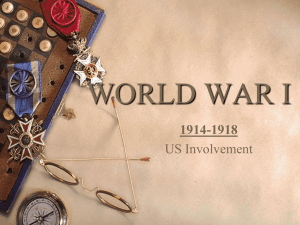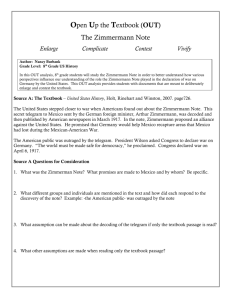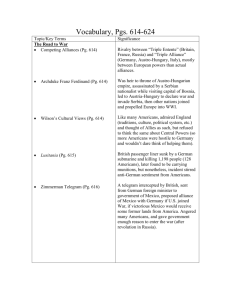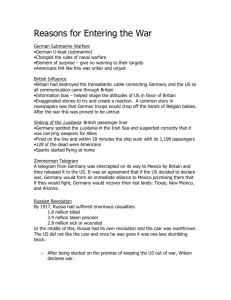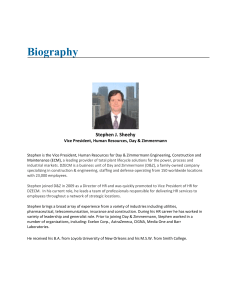The Zimmermann Telegram
advertisement
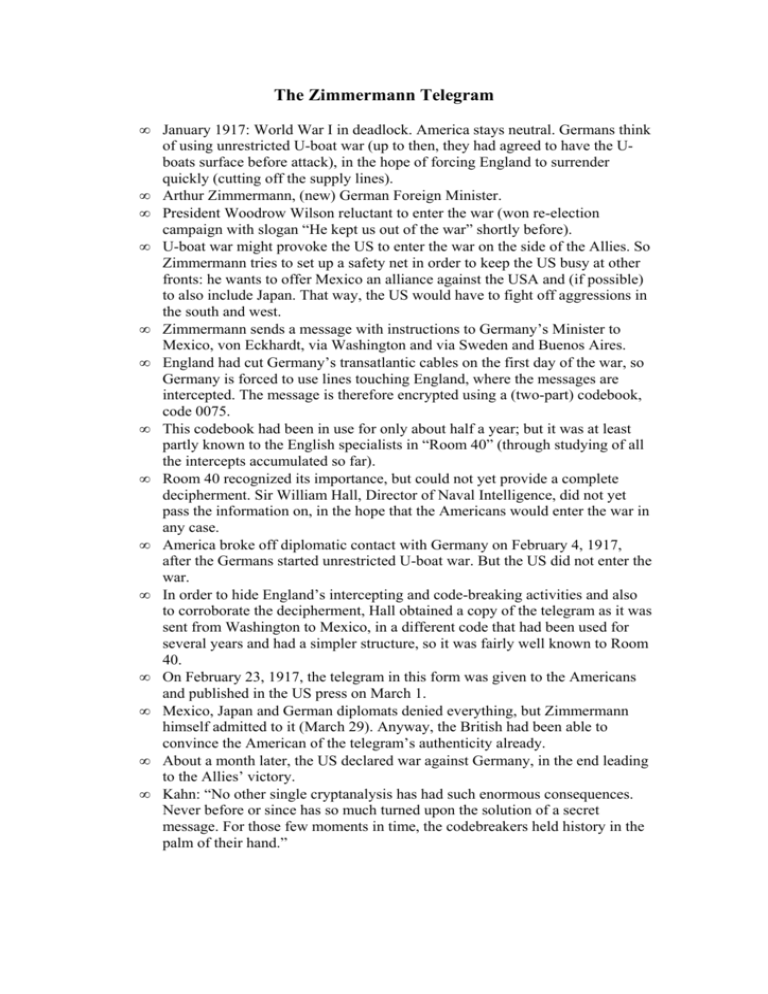
The Zimmermann Telegram • • • • • • • • • • • • • • January 1917: World War I in deadlock. America stays neutral. Germans think of using unrestricted U-boat war (up to then, they had agreed to have the Uboats surface before attack), in the hope of forcing England to surrender quickly (cutting off the supply lines). Arthur Zimmermann, (new) German Foreign Minister. President Woodrow Wilson reluctant to enter the war (won re-election campaign with slogan “He kept us out of the war” shortly before). U-boat war might provoke the US to enter the war on the side of the Allies. So Zimmermann tries to set up a safety net in order to keep the US busy at other fronts: he wants to offer Mexico an alliance against the USA and (if possible) to also include Japan. That way, the US would have to fight off aggressions in the south and west. Zimmermann sends a message with instructions to Germany’s Minister to Mexico, von Eckhardt, via Washington and via Sweden and Buenos Aires. England had cut Germany’s transatlantic cables on the first day of the war, so Germany is forced to use lines touching England, where the messages are intercepted. The message is therefore encrypted using a (two-part) codebook, code 0075. This codebook had been in use for only about half a year; but it was at least partly known to the English specialists in “Room 40” (through studying of all the intercepts accumulated so far). Room 40 recognized its importance, but could not yet provide a complete decipherment. Sir William Hall, Director of Naval Intelligence, did not yet pass the information on, in the hope that the Americans would enter the war in any case. America broke off diplomatic contact with Germany on February 4, 1917, after the Germans started unrestricted U-boat war. But the US did not enter the war. In order to hide England’s intercepting and code-breaking activities and also to corroborate the decipherment, Hall obtained a copy of the telegram as it was sent from Washington to Mexico, in a different code that had been used for several years and had a simpler structure, so it was fairly well known to Room 40. On February 23, 1917, the telegram in this form was given to the Americans and published in the US press on March 1. Mexico, Japan and German diplomats denied everything, but Zimmermann himself admitted to it (March 29). Anyway, the British had been able to convince the American of the telegram’s authenticity already. About a month later, the US declared war against Germany, in the end leading to the Allies’ victory. Kahn: “No other single cryptanalysis has had such enormous consequences. Never before or since has so much turned upon the solution of a secret message. For those few moments in time, the codebreakers held history in the palm of their hand.”
